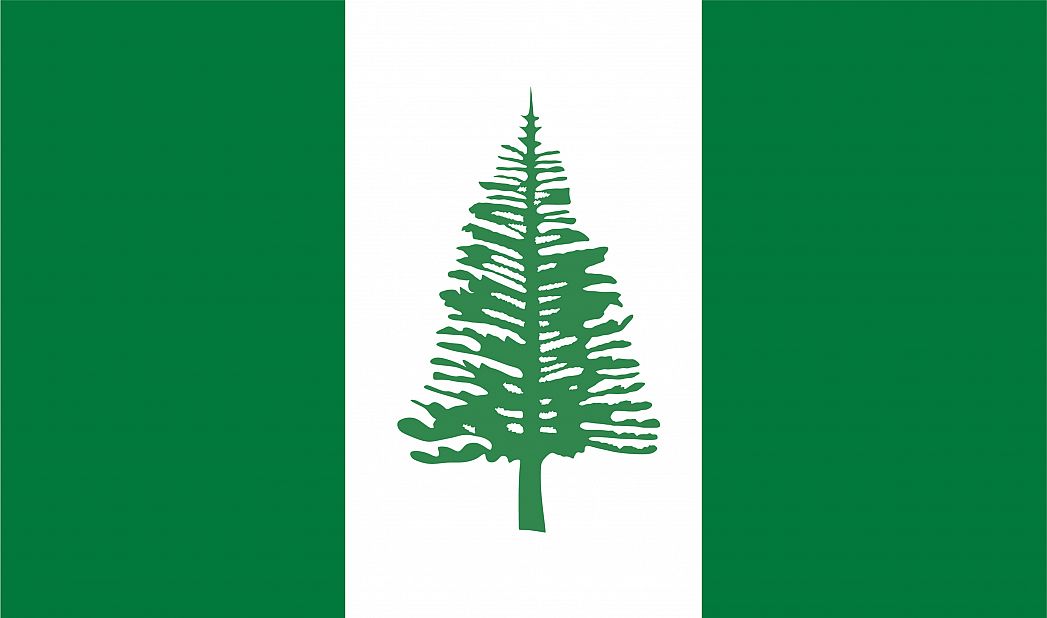The flag of Norfolk Island consists of three vertical stripes of green-white-green, the central field being slightly larger than the outer two. The ratio of the three lines is 7:9:7. The Norfolk Island Pine (Araucaria heterophylla) is depicted in green in the central white field and takes up the majority of this area. This flag was adopted on 6 June 1979 but became the official flag on 17 January 1980, the commencement date of the Norfolk Island Flag and Public Seal Act of 1979.
The Norfolk Pine was previously used as a symbol of the island on their 1856 seal. This tree is only native to Norfolk Island. However, many have been planted in Australia, and the tree also grows well in other countries. Also, this pine tree is symbolic due to their large size (growing to 200 feet tall in Norfolk Island) and stunning appearance. The green sections on either side of the flag are a symbol of the vast amounts of vegetation on Norfolk Island.
Although the original designer of this flag was never formally announced, this banner was chosen by the Norfolk Island Council as the new flag of the nation in 1979. This council was elected by citizens of the country once Australia had granted the nation limited self-governance. To this day, the individual who designed this flag is not known publicly.
Before European settlers could discover Norfolk Island, there were a group of East Polynesians living there who abandoned the area sometime in the 15th century. It is unknown if these first inhabitants used any flag or symbol. European settlement of Norfolk Island began in 1788, and the British Flag was raised on the island. After abandoning the island, British settlers once again reached Norfolk Island to establish a penal colony in 1825. The territory was eventually given to Australia from the United Kingdom in 1913, and the small island flew the flag of Australia until 1979.
This page was last modified on May 1st, 2018
More on Graphicmaps

Published on 2019-11-06
What is a Trade Embargo?

Published on 2019-11-04
Which Two Countries Used to Have the Same Flag?

Published on 2019-09-16
What Is the Only Two-Sided State Flag?

Published on 2019-09-16
Which Country Flag Looks Like the Texas Flag?

Published on 2019-08-29
Flags That Resemble the US Flag

Published on 2019-08-20
